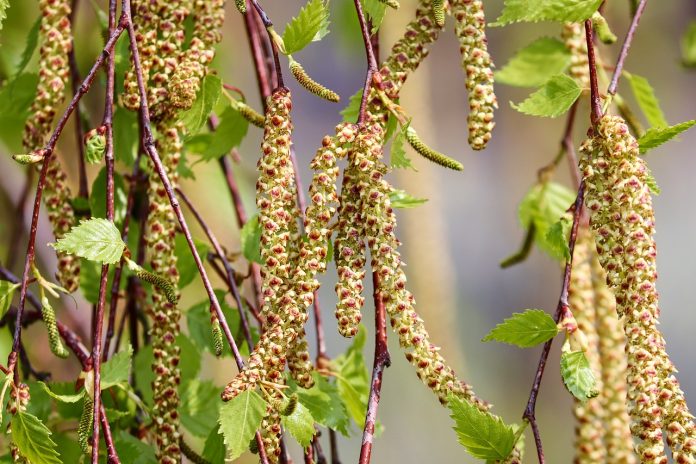There’s no doubt the last couple of weeks have been brutal for spring allergy sufferers. Tree pollen concentrations have been high, noses have been runny, throats have been sore and eyes have been itchy. If you’ve been dealing with allergies, it probably hasn’t been fun. Fortunately, there are some steps you can take to reduce your spring allergy symptoms.
Reducing your symptoms
Keep doors and windows closed. As temperatures begin to rise in the spring, we’re tempted to open windows and sliding glass doors to cool our homes. However, this could be a mistake for allergy sufferers. That gentle breeze you’re welcoming into your home is likely carrying pollen in, too.
Know when to stay indoors. Pollen counts are highest from 5 a.m. to 10 a.m., so avoid outdoor activities in the morning. You should also try to stay indoors on dry, windy days when pollen counts are higher. Rain helps clear pollen from the air, so the best time to go outside is after a rain.
Avoid yard work when you can. Lawn mowing and gardening can stir up pollen and activate your allergies. If you can have someone else help out with the yard work. If that task falls to you wear a mask and disposable gloves to limit pollen exposure.
Don’t drag pollen indoors. After you’ve been outside, shed your clothing and take a shower to limit the amount of pollen you’re dragging inside on your clothes and hair. it’s also a good idea to bath your pets more frequently if they go between indoors and outdoors.
Dry your laundry indoors. If you use a clothesline to dry your laundry when it’s nice out, avoid doing so when pollen counts are high. Hanging clothes outside only covers clean clothes in the pollen that’s activating your allergy symptoms.
Clean your home. Dust and vacuum frequently to collect pollen that may have been tracked inside your home. By cleaning frequently, you can limit your exposure indoors. You might also consider wearing a mask while you are cleaning to avoid exposure.
Replace and install filters. Filters help trap pollen but need to be replaced every so often. Use high-efficiency filters and follow regular maintenance schedules if you have forced air heating or air conditioning in your house. You may also consider covering air conditioning vents with cheesecloth to trap pollen and hiring someone to clean out your ducts annually. Additionally, vacuum filters should be routinely replaced.
Use your air conditioning. Windows provide an entry point for pollen and fans can circulate pollen inside your home. Use your air conditioner and set it to recirculate the air in your home. You should also use the air conditioner in your car instead of rolling the windows down.
Wash your bedding. Wash your bedding once a week in hot water to prevent pollen buildup.
Avoid fumes and smoke. Avoid cigarette smoke and other fumes that can worsen your allergy symptoms.
Treat your symptoms with steam. A hot shower or running a vaporizer can help ease your allergy symptoms.
Stay hydrated. If your nose feels stuffed up, runny or your throat is sore from a postnasal drip, drink more water to help thin the mucus in your nasal passages. You might also try hot tea to help soothe your throat and clear your nasal passages.
Nasal rinse. You may consider a nasal rinse to cleans mucus from your nose and reduce allergy symptoms. Using a rinse kit washes away bacteria, thins mucus and cuts down postnasal drip.
Allergy medication. There are plenty of over-the-counter decongestants, antihistamines and nasal sprays that can help reduce allergy symptoms as well. Talk to your physician or local pharmacist to get an idea of what will work best for you.















